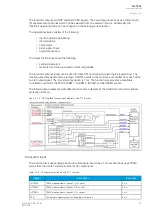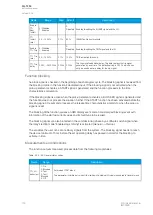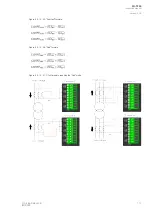
Power transformers are seen in electric power generation, transmission, and distribution. They are also
part of application networks for a wide range of purposes (eg. power and voltage levels). The most
common use for a transformer is (as the name implies) to transform alternating voltage from one
voltage level to another. What is common for all transformers is that they are a crucial and one of the
most important single components in a network because a transformer's failure affects a wide area in
the network. While transformers do not have many moving parts (apart from tap changers), their
electric and mechanical properties are far from being simple.
When designing transformer protection it is usual to consider the transformer's usage as well as the
power level it transforms. This is because the economical aspect becomes more significant as the size
of the transformer increases, and the applied protection should be in line with the cost of the
transformer. For example, there is little point in installing a high-level multifunction transformer device
into a distribution transformer of a few kVA that feeds a handful of farms in a rural area network.
Similarly, it is pointless to have nothing but fuses protecting a transmission transformer of a few
hundred MVA that feeds entire cities.
When designing transformer protection one should consider which protection elements are needed to
apply sufficient protection. The following table gives a rough idea what protection methods and
elements as well as risks exist for the different types of transformers. Overlooking these points when
designing transformers increase the risk of costly problems with the transformer.
Transformer
Risk level
Protection
Pole-
mounted <100
kVA
transformer.
Distribution.
Risks are mostly environmental; the most common issue is a
lightning hitting an overhead line. A broken device can be
switched to a new one within hours. Relatively cheap.
Protection includes feeder overcurrent and
earth fault protection. No separate
protection devices are normally applied.
<500 kVA
transformer in
industrial use,
installation
indoors.
Distribution,
applications.
The biggest risk is overloading; cooling can be an issue if the
environmental conditions are difficult. A broken device can be
replaced with a new one within hours. Possible fault extension
to other parts of the network or to building should be reduced.
Relatively cheap.
Protection includes feeder overcurrent and
earth fault protection. Fuses are used to
limit the possible short-circuit current.
500kVA...2
MVA
Distribution,
applications,
motors, small
generators.
Risks include overloading, overvoltage, transients, and cooling.
Replacing a broken device is costly, so fixing might be the
better option if a fault occurs. It is important to monitor the
device as the cost of fixing failures is probably higher than the
cost of monitoring.
Protection includes overcurrent and earth
fault protection, a dedicated pressure
guard (Buchholz gas relay), overloading
protection with winding temperature
monitors. Fuses could be considered for
limiting the short-circuit current.
If the transformer is oil-insulated, oil level
monitoring should be applied.
A
AQ
Q-T256
-T256
Instruction manual
Version: 2.06
104
© Arcteq Relays Ltd
IM00028
Содержание AQ-T256
Страница 1: ...AQ T256 Transformer protection IED Instruction manual...
Страница 2: ......
Страница 264: ...Figure 7 3 120 Example block scheme A AQ Q T256 T256 Instruction manual Version 2 06 262 Arcteq Relays Ltd IM00028...
Страница 284: ...Figure 8 13 141 Device installation A AQ Q T256 T256 Instruction manual Version 2 06 282 Arcteq Relays Ltd IM00028...
















































